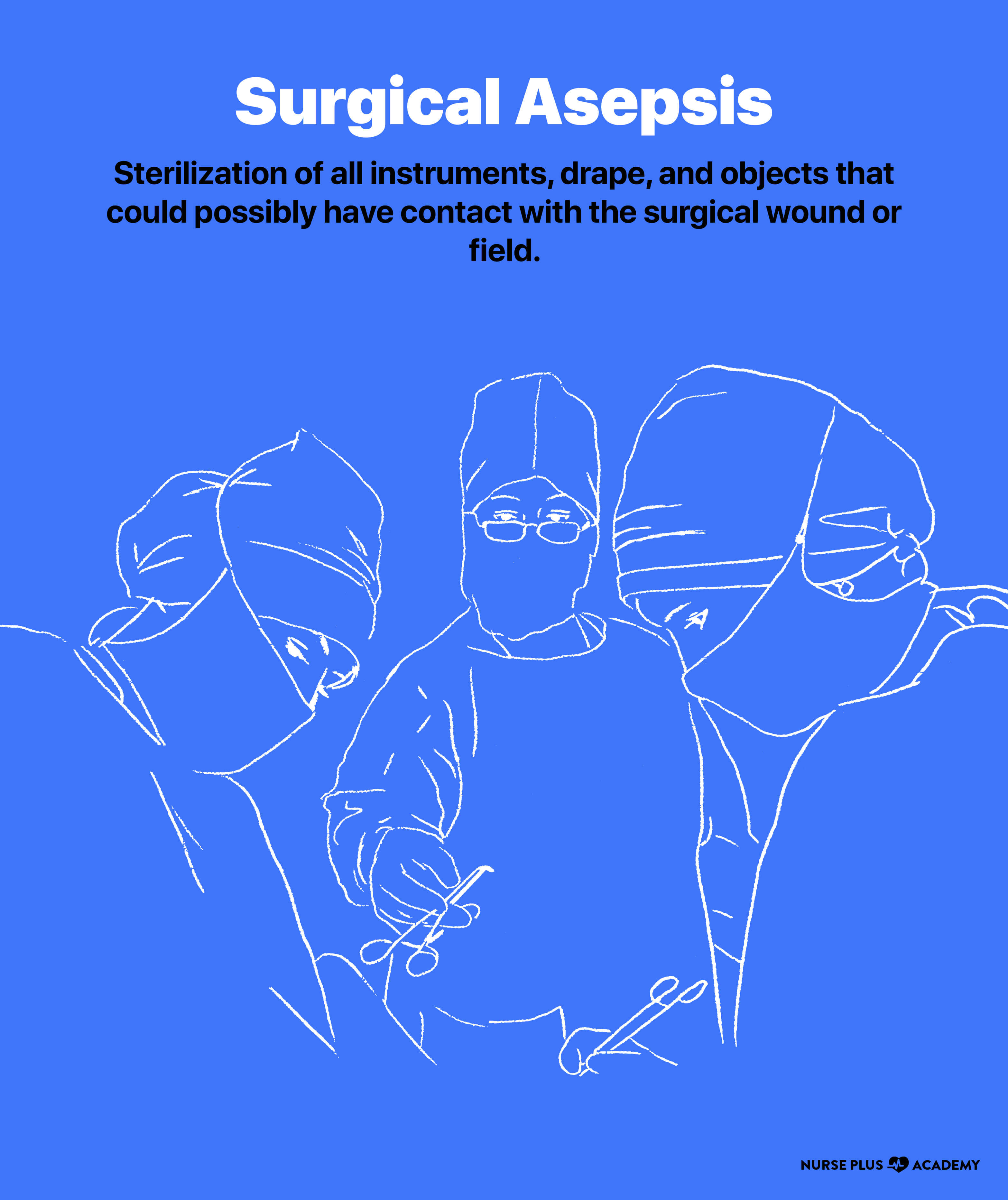
Smaller procedures, such as shave or punch biopsies and curettage, use the clean technique. Asepsis for these procedures is different than general surgery, however, because while sterile materials and gloves are used, there is no regulation in regard to foot traffic, airflow, or surgical scrub. When aseptic techniques are employed, they are generally used for excisional surgeries, flaps, grafts, and Mohs repairs. For example, only 35% of respondents reported utilizing a preoperative hand scrub before Mohs Surgery. A survey regarding perioperative antiseptic practices among members of the American College of Mohs Surgery showed that many traditional aseptic techniques are not used among dermatologists. With a shortage of scientific data, dermatologists must personally decide for themselves the degree of sterility they would like to practice during procedures.

In contrast to the traditional operating room, dermatology offices do not have strict requirements on the use of sterile technique during dermatologic surgeries, and without ventilatory systems, achieving a truly sterile environment is impossible in dermatology offices. In addition, the operating room must also have high-efficiency particulate air filters and directional airflow to minimize airborne infection.

#SIMILARITIES BETWEEN MEDICAL AND SURGICAL ASEPSIS SKIN#
While exact practices may vary at each institution, sterile technique in an operating room generally includes environmental cleaning, hand hygiene, preoperative skin preparation, sterile surgical attire, and maintaining a sterile surgical field. Multiple, extensive guidelines have been published regarding proper sterile technique during surgery. The practice of antisepsis in the surgical operating room involves the adoption of strict sterile techniques. Future prospective, randomized trials analyzing various components of the aseptic technique in dermatology are greatly needed so that guidelines can be established for practicing dermatologists. However, data on the feasibility of a clean protocol for Mohs reconstruction is conflicting. In addition, for some outpatient procedures, such as for minor excisions and Mohs surgery before reconstruction, elements of the clean technique can be used without increasing infection rates. Our review highlights that most dermatology procedures are not performed under completely sterile conditions due to the lack of environmental and foot traffic controls in dermatology offices. Included are studies examining optimal glove type, surgical instruments, skin antisepsis, and cost-reducing protocols. This review aims to clarify the terminology surrounding surgical asepsis and examines the importance of various components of the aseptic technique in cutaneous surgery. Dermatologic procedures are performed under varying degrees of antisepsis, and no clear guidelines exist regarding the role of the aseptic technique in dermatology.


 0 kommentar(er)
0 kommentar(er)
